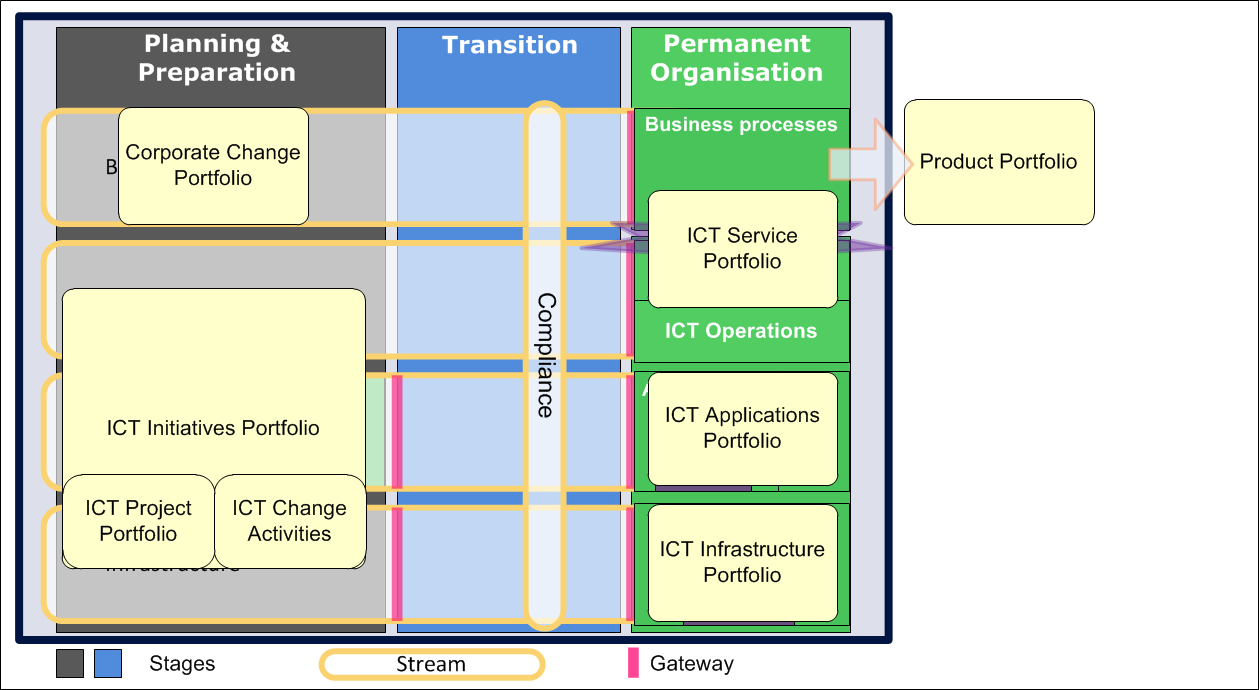agile Enterprise Portfolio Management
In today’s high competitive environment it is difficult to be fully responsive to rapidly changing markets. Organisations must be able to handle growing business demand with tight resources and streamline the avalanche of new ideas and requests. “Back-door” requests, that consume both financial and human resources, without delivering appropriate business value, should be expelled. To continuously control whether the highest business priorities are worked on, an agile Demand Processes to evaluate, prioritize, and resolve the business demand should be implemented.
Models used to continuously assess the Enterprise Portfolio state can only work if supported by automation with tools like codeBeamer ALM
HP PPM Demand Management or Microsoft TFS. Changing circumstances that bring indicators outside the pre-defined boundaries trigger the process to re-assess the portfolio and if needed change the delivery priorities. Agile Portfolio Management nowadays is the only way to effectively identify, select and deliver project portfolios that best align with an organization’s business strategy.

(click to enlarge)
Project Portfolio Optimization: cost constraint analysis and optimization.
Project Portfolio Optimization (PPO) uses methodologies to quantify the potential cost, benefits and risk/return of the projects you are considering or have underway. The result is a systematic way of analysing and defending capital budgeting and project selection decisions while improving capital efficiency. The optimal portfolio aligned with business priorities and to maximize ROI, can be identified by varying budget, business drivers and portfolio constraints.
Project portfolio prioritization
Prioritize projects by using a variety of value measurements: strategic value, financial value and risk assessing request from multiple dimensions and for creating a common currency with which to make comparisons. Resource constraint analysis, to maximize resource utilization, can be established with capacity planning.
Other project valuation techniques:
• What-if scenario’s
• Efficient Frontier charts
• Total project value
• Hierarchical portfolios
• Value by year
• Value to risk
•Don’t plan far in advance
•Prioritise short term with up to date backlog behind it
•Projects should run short cycles that bring quick result
What is best practice for projects itself also applies to programs and work plans. Portfolio backlog for projects like backlog with features is for agile projects. Projects should be as small as possible self-containing items that bring result quickly and flexibly.
Makes it possible to quickly adept and switch projects based on changing circumstances without wasting too much money on years continuing projects that have to be cut without any result
Portfolio optimization: cost constraint analysis and optimization
Identify the optimal portfolio for the business drivers priorities under varying budget and portfolio constraints
Value optimization: alignment with business priorities and maximizing ROI.
Resource constraint analysis and utilization
Maximize resource utilization with capacity planning
Business driver definition and prioritization
Drivers describe intent of the organization’s business strategy [Business drivers: the factors that shape and achieve business objectives]
Prioritize business drivers with pair wise assessment or other techniques
